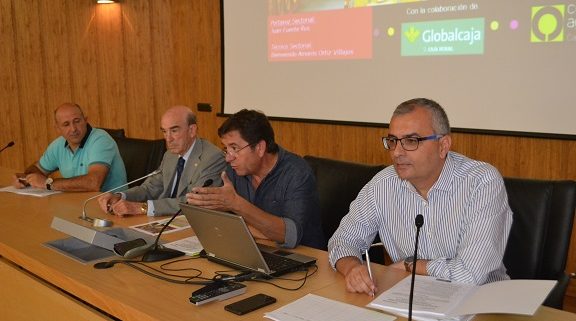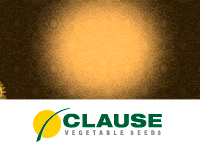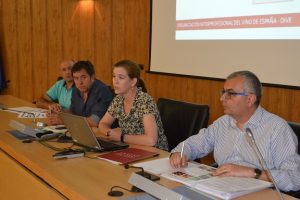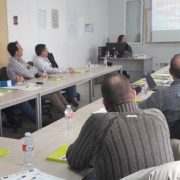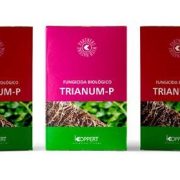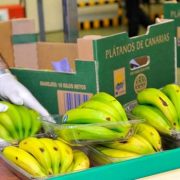The cooperatives expect a production of 21.5Mhl in La Mancha and good commercial prospects
Agri-food cooperatives in Castilla-La Mancha estimate that production in their autonomous community for the next wine year 2017-18 will reach 21.5 million hectoliters, as this organization has announced during its recent Assembly of Wines, held In Tomelloso, and in which the legislative, productive and commercial keys of that campaign were approached.
Likewise, an agile and sustained market is foreseen, due to the reduction of almost 20 million hectoliters expected in the European vintage, together with stocks very similar to those of the last vintage campaign, both in Spain and in Castilla-La Mancha, which “could set an appropriate scenario for attracting value and greater recognition in the world wine markets.”
Agri-food Cooperatives Castilla-La Mancha represents more than 75% of the wine production and processing of its autonomous community region
These production forecasts are formulated at the gates of an advanced harvest in two weeks and marked by early sprouting, intense heat in spring and summer, and summer drought; however, if the heat continues to erode the rainfed vineyard, this figure may even go down. On the other hand, if the water cycle changes and increases before the harvest, it could increase.
Last year Castilla-La Mancha had a harvest, still provisional, 24.22 million hl, so that forecasts would drop by 10.2%
Cooperative’s spokesman, Juan Fuente, stated at the beginning of the Assembly that “we are in a crucial situation for the sector, a historic moment where many things are happening and very quickly. We are going to arrive at the harvest with some uncertainty but the situation is good, the market is active and the prices are rising”.
Forecasts in Spain and Europe
Agri-food Cooperatives Castilla-La Mancha estimates the national level at 38.3 million hl, 12.2% less than last season, ie 5.5 million hl less, with decrease in all Autonomous communities, except for the Canaries, but with a greater incidence in those of the northern third peninsular (Galicia, Castile and Leon, Basque Country and Navarre, above all); Although this figure will be very conditioned by the main producing autonomous community that is Castilla-La Mancha.
In the European context, the spring frost that took place last April made a dent in the vineyard, affecting mainly France, whose Ministry quantified, on 17th July, a loss of 17% of production compared to last year, that is, 8 million hl less.
Italy and other Central European countries could complete an overall reduction of 5.5 million hl, reaching a production around 148 million hl, assuming a notable decrease of 10-12% compared to last season
Given these data, Juan Fuente has placed special emphasis on the cooperative wineries of Castilla-La Mancha “to supply the market with differentiated and quality products, in order to obtain better value capture and greater recognition in the world wine markets“.
Regarding wine stocks, data from Castilla-La Mancha are in the average of the last 10 campaigns, around 9 million hl of wine and must, of which about 7.75 million hl would be wine
As for Spain, and projecting INFOVI data until the end of the campaign (31 July), the cooperative organization expects some 30 million hl of wine stock, one more than the previous year, which (22 million Hls. of wine) and in the various outlets in the domestic market, 17.50 million hl, of which 10.2 would be due to direct consumption, and Rest other industrial uses (distillation, vinegars, beverages agreed, flavored, etc.)
New legislation
Aside from influencing the new restructuring and conversion of vineyards to be carried out in 2018, those responsible for the cooperative wineries also debated on the next legislative developments, marked by the two new Royal Decrees that the Ministry intends to publish later this year 2017. One of them will modify the current potential of viticulture, which will introduce new criteria for the award of authorizations of vineyard plantations to apply from 2018; and the other, in order to develop the new five-year period of support program for the Spanish wine sector (2019-2023), with the same measures as the previous program (vineyard restructuring and conversion, promotion in third countries, by-products), albeit with certain adaptations to the new Community legislation.
Likewise, Cooperatives positively values the reduction of the maximum declarable yield of 40,000 to 30,000 kg / ha, as a control method used by the Ministry of Agriculture to detect possible irregularities in the harvest declarations made through the DECOVI computer system, since there are no yields of this magnitude, and maintaining them allows the possibility of practices that are not transparent and harmful to the sector as a whole, encouraging the regional administration to study even greater reduction.
Susana García Dolla, the new director of the Spanish Wine Interprofessional Organization (OIVE), informed the cooperative wineries of the region about the progress of the first campaign to implement the Standard Extension, the advertising campaign with which is intended to promote the consumption of wine in the domestic market, which “could be a reality from next autumn,” and on the various projects that are working “for the benefit of the entire national wine sector”.
The celebration of this Assembly was also used to inform the participants of the actions being taken by Cooperatives in the areas of Gender Equality and Youth, for the active incorporation of women and young people to cooperatives and their governing bodies, with the intervention Of its spokesmen: Carmen Vallejo and Inés Guillen, respectively.
The General Director of Industries and Cooperatives, Gregorio Jaime Rodríguez, also participated in this forum, where he transferred to his assistants information on the last call for investment aid (FOCAL) this year, budget, applications submitted and expectations on resolutions Finally approved; in addition to exposing the vision of the Ministry of Agriculture, Environment and Rural Development of Castilla-La Mancha on the differentiated payment of grapes for quality as an essential criterion in the award of this line, and as a priority in other aid lines such as restructuring Of the vineyard.
The order that regulates the creation of Agro-Food Producers’ Groups in Castilla-La Mancha to promote joint and integrated marketing was also addressed by the head of the regional administration. According to the director general, “the publication of this order complements the instruments that can be used by cooperatives to acquire more commercial muscle and business dimension”, referring to the regulation of Priority Associative Entities, both at the autonomous level (EAPIR) , As supra autonomic (EAP).
Vintage campaign rules
On the other hand, generic rules were introduced to differentiate the quality of the grapes at the entrance of the winery, through bonuses in the fulfillment of certain objective parameters; penalize excessive returns; advance management of mechanized harvesting; penalties for defects in the state of health of the grape, or harvest at the right time, especially the early varieties, which are the most value added.
In addition, the cooperative organization was committed to encourage the production of must as a product regulating the wine market, targeting those productions with high yields or over-drying caused by drought, and supply the market for alcohols, a product that could have better sales prospects production in the main areas of cognac production in France.
Source: Agro-food cooperatives Castilla-La Mancha




